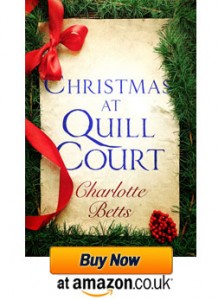Christmas is coming, the goose is getting fat,
Please do put a penny in the old man’s hat.
If you haven’t got a penny, a ha’penny will do
If you haven’t got a ha’penny, then God bless you!
In wealthy households the Regency Christmas dinner was often eaten between six and seven in the evening and consisted of several courses, each with up to twenty different items, laid out in a symmetrical pattern on the table. This was known as dining à la francaise. There would have been soup, vegetables and a variety of fish dishes. Roast beef and venison were the star of the dinner table, with a supporting cast of mutton, brawn, goose or capon. Game was frequently eaten: pheasant, grouse, pigeon, partridge and hare. This style of dining was gradually giving way to eating à la russe, a custom introduced by the Prince Regent’s chef, where dishes were served in sequence.
In Norfolk, swan was still traditional. Older birds were too tough to eat but cygnets were penned for six months or so and fattened on grass and barley. It wasn’t until the middle of the C19th that turkey became popular. Turkey had been introduced from America in the C16th and were driven to market in London from Norfolk wearing little boots to protect their feet. Both domestic and wildfowl were at their fattest at the end of the year, making them a succulent choice at Christmas time. In the wild, feed became scarce in the early months of the new year and birds became leaner.
Smaller households may have had only a small oven, or no oven at all, and so housewives took their beef or goose to the bakers on the way to church on Christmas morning, collecting the roasted meat after the service. Stuffing made with bread made the meat go further in large families and there would be seasonal vegetables such as carrots, cabbages and artichokes.
 Christmas pies, originating in Yorkshire, were made of a vast ‘coffin’ of pastry filled with boned poultry. This might have included a turkey stuffed with a goose, in turn filled with a capon, a duck and a pigeon. A decorative, glazed lid topped the pie and as it cooked the goose fat based the other birds, keeping the meat moist and tender. Melted butter was poured in through a hole in the top of the cooked pie to fill any cavities, extending its keeping qualities.
Christmas pies, originating in Yorkshire, were made of a vast ‘coffin’ of pastry filled with boned poultry. This might have included a turkey stuffed with a goose, in turn filled with a capon, a duck and a pigeon. A decorative, glazed lid topped the pie and as it cooked the goose fat based the other birds, keeping the meat moist and tender. Melted butter was poured in through a hole in the top of the cooked pie to fill any cavities, extending its keeping qualities.
Christmas pudding was carried to the table with ceremony (see my earlier post on Stir-Up Sunday) and mince pies would also be served. The mincemeat then contained chopped beef, suet, dried fruits, eggs, orange peel, spices and brandy. Mince pies were less sweet than those we eat today. They were baked in dozens and eaten every day for the Twelve Days of Christmas to ensure good luck for the coming year.
Wealthy households might also serve unseasonal fruits, such as pineapples or grapes, from their country estate glasshouses and there would be nuts, marchpane and candied fruits with sweet desert wine to end this magnificent repast.
The Regency Christmas dinner presented a wonderful opportunity for the rich to display their wealth and for their less-advantaged relatives and neighbours to enjoy their splendid hospitality. Christmas time was unlikely to be very merry, however, for the poor living in country hovels or city slums.
 If you’d like to read more about Christmas in the Regency era you may like Christmas in Quill Court, a short story available from Amazon at 99p for your e-reader.
If you’d like to read more about Christmas in the Regency era you may like Christmas in Quill Court, a short story available from Amazon at 99p for your e-reader.





Really enjoyed reading your Regency blog – quite an eye-opener. This is the first time I’ve visited; thanks to the link from the twitter site. Unlike others I visited, you have made it easy to leave a comment. I’m fairly new to social media so am still learning the ropes. Thanks Charlotte.
It’s good to have feedback so thank you for leaving a comment, Emma. I think the Georgian and Regency era is fascinating and I love to search out interesting facts to share with readers.